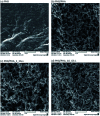Active biodegradable packaging films modified with grape seeds lignin
- PMID: 35521111
- PMCID: PMC9055960
- DOI: 10.1039/d0ra04074f
Active biodegradable packaging films modified with grape seeds lignin
Abstract
Biodegradable packaging materials represent one possible solution for how to reduce the negative environmental impact of plastics. The main idea of this work was to investigate the possibility of utilizing grape seed lignin for the modification of polyhydroxyalkanoates with the use of its antioxidant capacity in packaging films. For this purpose, polymeric films based on the blend of high crystalline poly(3-hydroxybutyrate) (PHB) and amorphous polyhydroxyalkanoate (PHA) were prepared. PHB/PHA films displayed Young modulus of 240 MPa, tensile strength at a maximum of 6.6 MPa and elongation at break of 95.2%. The physical properties of PHB/PHA films were modified by the addition of 1-10 wt% of grape seeds lignin (GS-L). GS-L lignin showed a high antioxidant capacity: 238 milligrams of Trolox equivalents were equal to one gram of grape seeds lignin. The incorporation of grape seeds lignin into PHB/PHA films positively influenced their gas barrier properties, antioxidant activity and biodegradability. The values of oxygen and carbon dioxide transition rate of PHB/PHA with 1 wt% of GS-L were 7.3 and 36.3 cm3 m-2 24 h 0.1 MPa, respectively. The inhibition percentage of the ABTS radical determined in PHB/PHA/GS-L was in the range of 29.2% to 100% depending on the lignin concentration. The biodegradability test carried out under controlled composting environment for 90 days showed that the PHB/PHA film with 50 w/w% of amorphous PHA reached the degradability degree of 68.8% being about 26.6% higher decomposition than in the case of neat high crystalline PHB film. The degradability degree of PHA films in compost within the tested period reflected the modification of the semi-crystalline character and varied with the incorporated lignin. From the toxicological point of view, the composts obtained after biodegradation of PHA films proved the non-toxicity of PHB/PHA/GS-L materials and its degradation products showed a positive effect on white mustard (Sinapis alba L.) seeds germination.
This journal is © The Royal Society of Chemistry.
Conflict of interest statement
There are no conflicts to declare.
Figures









Similar articles
-
Fabrication and Characterization of Poly(hydroxybutyrate)- and Poly(caprolactone)-Based Active Biodegradable Films Incorporating Allyl Isothiocyanate.Polymers (Basel). 2025 Apr 27;17(9):1189. doi: 10.3390/polym17091189. Polymers (Basel). 2025. PMID: 40362973 Free PMC article.
-
Development and characterization of active poly (3-hydroxybutyrate) based composites with grapeseed oil and MgO nanoparticles for shelf-life extension of white button mushrooms (Agaricus bisporus).Int J Biol Macromol. 2024 Mar;260(Pt 2):129521. doi: 10.1016/j.ijbiomac.2024.129521. Epub 2024 Jan 19. Int J Biol Macromol. 2024. PMID: 38246453
-
Key insights into mechanism and kinetics of biodegradation of poly (3-hydroxybutyrate)-based nanocomposite films in natural soil and river water environments.Bioresour Technol. 2024 Oct;409:131238. doi: 10.1016/j.biortech.2024.131238. Epub 2024 Aug 8. Bioresour Technol. 2024. PMID: 39122131
-
Polyhydroxybutyrate blends: A solution for biodegradable packaging?Int J Biol Macromol. 2022 May 15;207:263-277. doi: 10.1016/j.ijbiomac.2022.02.185. Epub 2022 Mar 5. Int J Biol Macromol. 2022. PMID: 35257732 Review.
-
Current advances and emerging trends in sustainable polyhydroxyalkanoate modification from organic waste streams for material applications.Int J Biol Macromol. 2023 Dec 31;253(Pt 2):126781. doi: 10.1016/j.ijbiomac.2023.126781. Epub 2023 Sep 9. Int J Biol Macromol. 2023. PMID: 37696371 Review.
Cited by
-
Biodegradable Active Packaging Material Containing Grape Seed Ethanol Extract and Corn Starch/κ-Carrageenan Composite Film.Polymers (Basel). 2022 Nov 11;14(22):4857. doi: 10.3390/polym14224857. Polymers (Basel). 2022. PMID: 36432984 Free PMC article.
-
Integrating the latest biological advances in the key steps of a food packaging life cycle.Front Nutr. 2023 Jul 27;10:1223638. doi: 10.3389/fnut.2023.1223638. eCollection 2023. Front Nutr. 2023. PMID: 37575333 Free PMC article. Review.
-
A sustainable synthesis of polyhydroxyalkanoate from stubble waste as a carbon source using Pseudomonas putida MTCC 2475.Front Bioeng Biotechnol. 2024 Apr 11;12:1343579. doi: 10.3389/fbioe.2024.1343579. eCollection 2024. Front Bioeng Biotechnol. 2024. PMID: 38665813 Free PMC article.
-
Effect of an Antioxidant Based on Red Beetroot Extract on the Abiotic Stability of Polylactide and Polycaprolactone.Molecules. 2021 Aug 27;26(17):5190. doi: 10.3390/molecules26175190. Molecules. 2021. PMID: 34500624 Free PMC article.
-
Lignins as Promising Renewable Biopolymers and Bioactive Compounds for High-Performance Materials.Polymers (Basel). 2023 Jul 26;15(15):3177. doi: 10.3390/polym15153177. Polymers (Basel). 2023. PMID: 37571069 Free PMC article. Review.
References
-
- Poole J., Packaging trends, http://www.packaginginsights.com
-
- Ker W. Sen Y. K. Rajendran S. D. E3S Web Conf. 2019;136(4):04092.
-
- Koller M., Salerno A. and Braunegg G., in Bio-based plastics: materials and applications, ed. S. Kabasci, John Wiley & Sons, 2013, pp. 137–169
LinkOut - more resources
Full Text Sources
Miscellaneous

